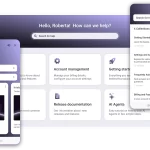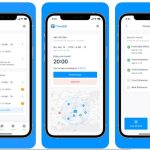MOBILE APPLICATIONS TESTING STRATEGIES
Mobile application testing is an activity by which application software is being developed for using it in hand and it is tested for its usability, functionality and consistency. It presents unique challenges. Mobile application testing is expensive and consumes time, yet it is critical to ensure the consumers to have a positive experience when they use the mobile applications. You will not get any single testing method completely satisfying, as there are pros and cons of each testing method. Mobile application testing either can be automated or can be a manual type of testing. It can either be pre-installed or can be installed from mobile software distribution platforms. As there is no single tool can guarantee success. After analysing and modifying organization’s current mobile app strategy , it is essential to ensure that the consumers can get a good quality product in a cost effective manner.
Key challenges in mobile application testing
The main challenges in testing mobile application that relate to the unique characteristics of the mobile market:
1. There are varieties of mobile devices that differ in screen size, input methods like touch, QWERTY, normal with different hardware capabilities.
2. There are various types of mobile operating system on the market like Android, BREW, Windows phone, IOS, BREWMP, Blackberry, and Symbian. Each of them has its limitations. Testing each system in multiple devices creates challenges for the testers in every platform.
3. In the world,there are 400 network operators like some CDMA, GSM. TD-SCDMA and FOMAuse are less common network standards. Different network operators use different types of network infrastructures and that limits the informational flow.
4. Test script or scripting is a key challenge for variety of devices. Single script does not function on every device as devices differ in menu structure, keystrokes, input methods, and display properties.
Grabbing the picture
Users around the world use mobile web application. Development of mobile software is still not updated so much that it will be able to adopt modern development. Thus, handling the challenges of testing mobile application should increase the capability and strategies of test automation that an organization uses.
Reducing manual testing
Manual testing is testing software for defects. It cannot be and should not be eliminated. A tester needs to play this role of an end user and should to use most features of the application in order to ensure of correct behavior. Manual testing is slower compared to automated testing. It is possible to replace manual testing whenever possible in order to increase QA efficiency.
Planning for scale
As you have already utilized the mix of home grown test apps, cloud based test services and 3rd party test frameworks. Among this cloud-based test services are much more flexible than 3rdparty frameworks. As 3rdparty frameworks meant for the in house and it is used to design its scalability and substantial use as well. To investigate scalability looks for the free trial version.
Adopt cross platform
Market share for android, iOS, and windows can be changed drastically. A sing OS that is fixed in your enterprise can be changed at any time. Therefore, it is suitable to grant the extra weight of QA to test frameworks that build cross platform support. Otherwise, you have to maintain two different tools simultaneously.
Comprehensive test frameworks
New mobile applications are being created to provide various platforms. Frameworks support both emulation and real devices for testing,development progress in requirement to final release. Mobile testing will be more complicated day by day. As the test cage coverage increase, it will improve the quality of the final product release. Therefore, it is necessary to increase the testing capabilities at reduced costs.






















